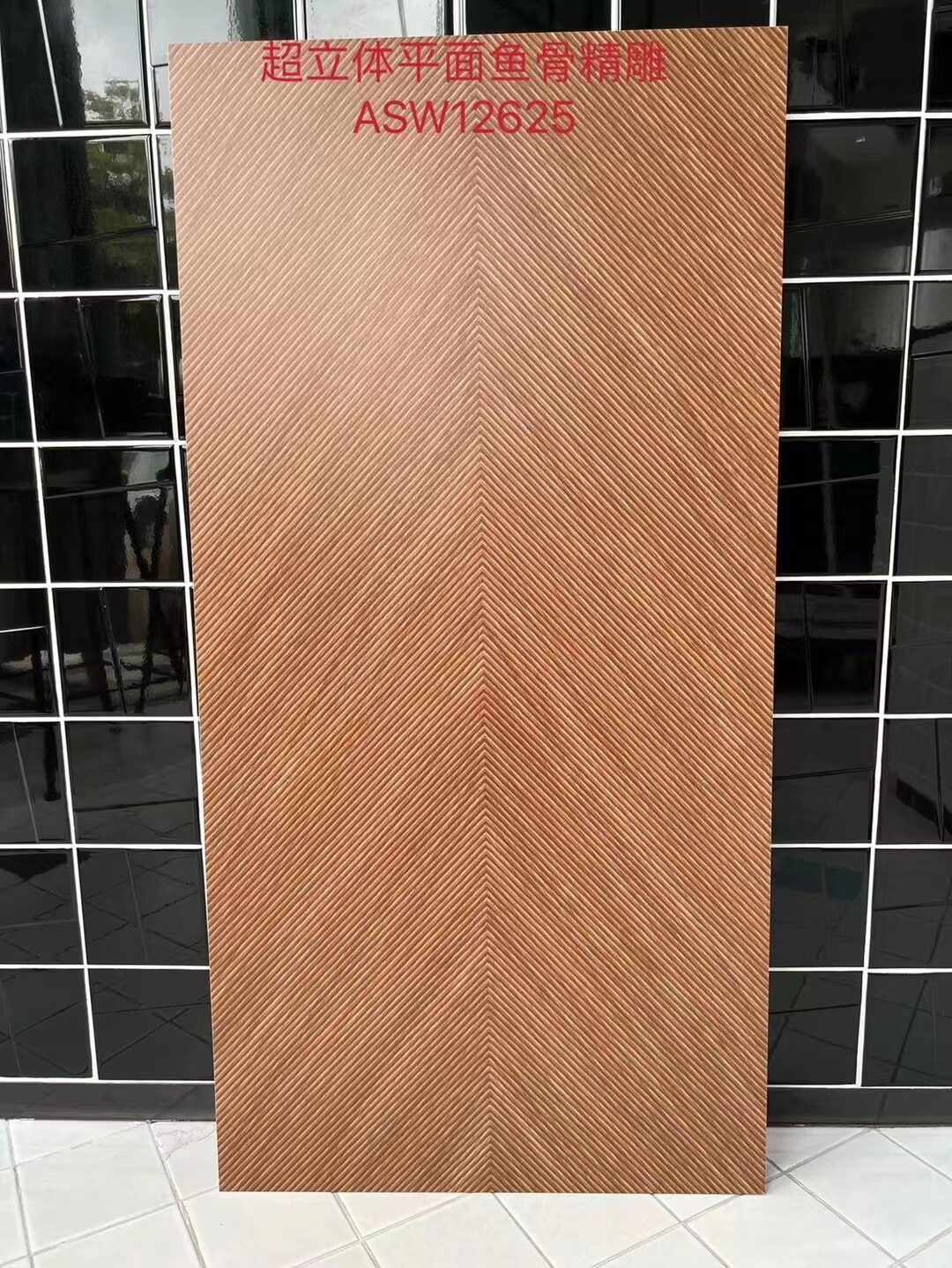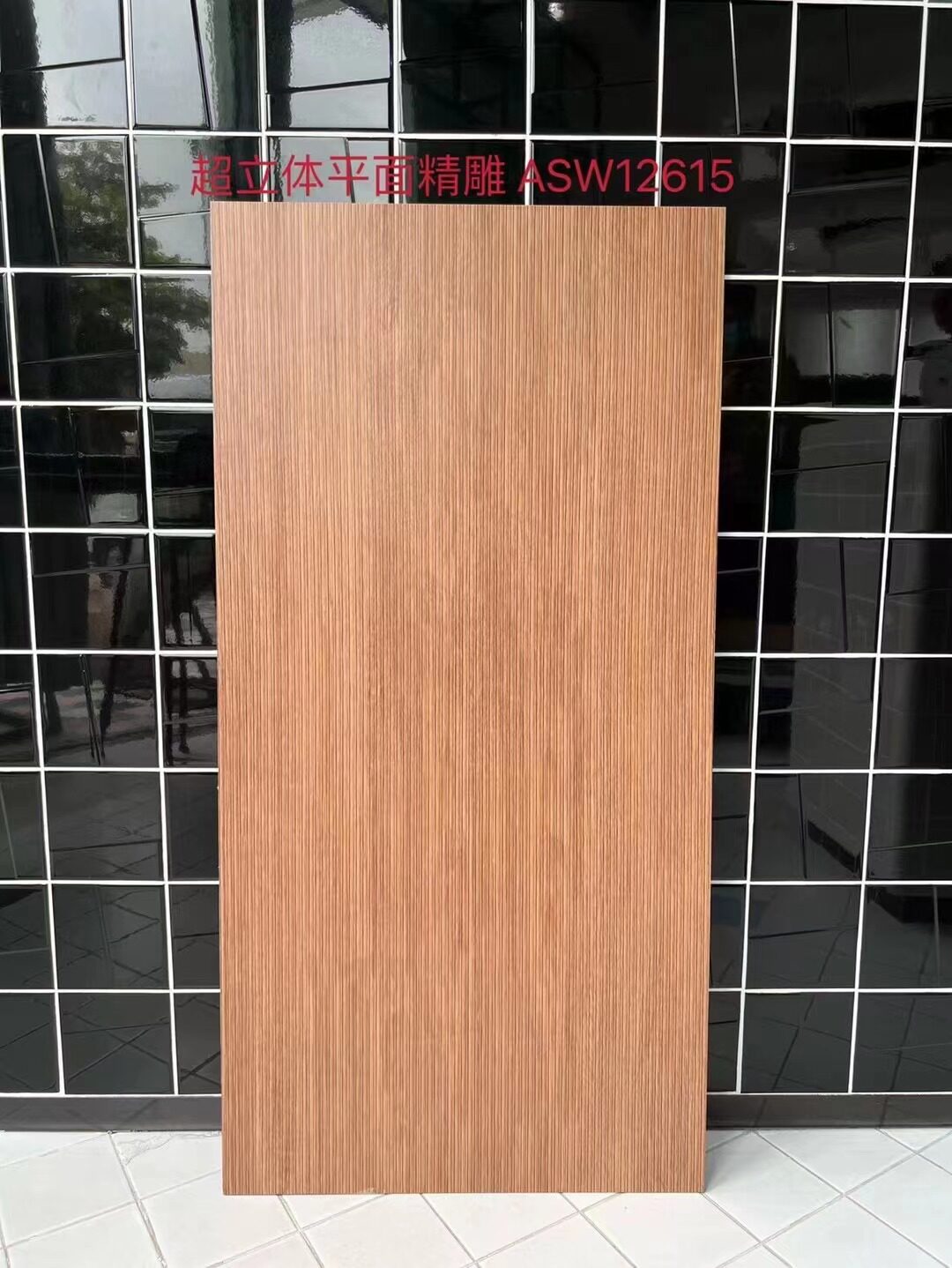Email format error
Email cannot be empty
Email already exists
6-20 characters(letters plus numbers only)
The password is inconsistent
Email format error
Email cannot be empty
Email does not exist
6-20 characters(letters plus numbers only)
The password is inconsistent

In the world of home design, herringbone wood effect porcelain tiles have emerged as a top choice for homeowners and designers alike. These tiles combine the timeless elegance of wood with the durability and versatility of porcelain, offering an ideal solution for various spaces. Whether you’re renovating your kitchen, bathroom, or living room, herringbone wood effect porcelain tiles can provide a stunning aesthetic while standing up to the demands of everyday life.
What Are Herringbone Wood Effect Porcelain Tiles?
The porcelain tiles are designed to mimic the appearance of natural wood while offering the benefits of porcelain. The herringbone pattern is created by laying rectangular tiles in a zigzag formation, creating a distinctive V-shaped design that adds visual interest and depth to any space. Unlike natural wood, which can be prone to scratches, dents, and water damage, porcelain tiles are incredibly durable and resistant to these common issues.
The Appeal of the Herringbone Pattern
The herringbone pattern is a classic design that has been used for centuries in both flooring and wall applications. Its popularity stems from its ability to create a sense of movement and sophistication in a space. When combined with the wood effect, it brings warmth and texture, making it a versatile choice for both modern and traditional interiors.
Benefits of Porcelain Tiles
Porcelain tiles are known for their durability, low maintenance, and water resistance. These qualities make the porcelain tiles an excellent choice for high-traffic areas and moisture-prone spaces like bathrooms and kitchens. Additionally, porcelain tiles are available in a wide range of colors and finishes, allowing for endless design possibilities.
Applications of Herringbone Wood Effect Porcelain Tiles
One of the major advantages is their versatility. They can be used in a variety of settings and for different purposes. Here are some of the most popular applications:
Kitchen Flooring
The kitchen is often considered the heart of the home, and choosing the right flooring is crucial. The porcelain tiles are a fantastic option for kitchen flooring due to their durability and ease of cleaning. Spills and splashes are common in the kitchen, but these tiles can handle them without staining or warping. The herringbone pattern also adds a touch of elegance, transforming the kitchen into a stylish and inviting space.
Bathroom Walls and Floors
Bathrooms require materials that can withstand moisture and frequent cleaning. The porcelain tiles meet these requirements perfectly. They can be used on both floors and walls to create a cohesive and luxurious look. The wood effect brings a natural and calming feel to the bathroom, while the porcelain ensures the space remains practical and easy to maintain.
Living Room and Entryway Floors
The living room and entryway are areas that see a lot of foot traffic, making durability a key consideration. The porcelain tiles are tough enough to handle the wear and tear of these spaces while providing a beautiful and welcoming aesthetic. The herringbone pattern adds character and charm, making a strong first impression in entryways and creating a cozy atmosphere in living rooms.
Accent Walls
Beyond flooring, herringbone wood effect porcelain tiles can be used to create stunning accent walls. This application allows you to introduce texture and interest without overwhelming the space. Whether behind a fireplace, in a dining room, or as a feature in a bedroom, an accent wall with these tiles can be a focal point that elevates the entire room’s design.
Choosing the Right Herringbone Wood Effect Porcelain Tiles
When selecting the porcelain tiles, there are several factors to consider to ensure you achieve the desired look and functionality.
Color and Finish
These tiles come in a variety of colors, from light oak and ash to deep walnut and mahogany. The choice of color can significantly impact the mood of the room. Light colors tend to make spaces feel larger and more open, while darker shades add a sense of coziness and sophistication. Additionally, consider the finish—matte tiles offer a more rustic and natural look, while glossy tiles provide a sleek and modern appearance.
Size and Proportion
The size of the tiles can affect the overall look of the herringbone pattern. Larger tiles create a bolder, more contemporary feel, while smaller tiles offer a more intricate and traditional appearance. It's also important to consider the proportion of the tiles in relation to the size of the room. Larger rooms can handle larger tiles and patterns, whereas smaller rooms may benefit from smaller tiles to avoid overwhelming the space.
Installation and Grout
Proper installation is crucial to achieving the desired herringbone effect. It’s recommended to hire a professional installer with experience in laying herringbone patterns to ensure precision and quality. The choice of grout color can also impact the overall look—matching grout provides a seamless appearance, while contrasting grout highlights the pattern and adds visual interest.
Maintenance and Care
One of the standout features is their low maintenance requirements. However, to keep them looking their best, a few simple care tips should be followed.
Regular Cleaning
Routine cleaning involves sweeping or vacuuming to remove dust and debris, followed by mopping with a mild detergent. Unlike natural wood, these tiles do not require special cleaners or treatments, making upkeep straightforward and hassle-free.
Stain and Scratch Resistance
Porcelain tiles are naturally resistant to stains and scratches, but it’s still a good idea to clean up spills promptly and use furniture pads to prevent potential damage from heavy furniture. For stubborn stains, a mixture of baking soda and water can be used to gently scrub the area without damaging the tile surface.
Dealing with Grout
Over time, grout can become discolored due to dirt and moisture. Regular cleaning with a grout-specific cleaner or a mixture of vinegar and water can help maintain its appearance. Sealing the grout periodically can also prevent staining and prolong its lifespan.
The Environmental Impact of Herringbone Wood Effect Porcelain Tiles
In today’s world, sustainability is an important consideration for many homeowners. The porcelain tiles offer several environmental benefits.
Sustainable Materials
Porcelain tiles are made from natural clay and other raw materials, which are abundant and sustainable. Many manufacturers also incorporate recycled materials into their tiles, further reducing their environmental footprint.
Longevity and Durability
The long lifespan of porcelain tiles means they do not need to be replaced as frequently as other flooring options, reducing waste. Their durability also means less maintenance and fewer resources needed for repairs and replacements.
Energy Efficiency
Porcelain tiles have excellent thermal conductivity, which can help with energy efficiency in the home. In warmer climates, they can help keep interiors cool, reducing the need for air conditioning. In colder climates, they can be used with underfloor heating systems to efficiently warm the space.
Designing with Herringbone Wood Effect Porcelain Tiles
Incorporating the porcelain tiles into your home design can transform any space, adding a touch of elegance and sophistication. Here are some design tips to help you make the most of these versatile tiles.
Creating Visual Interest
The herringbone pattern itself is visually striking, but you can enhance its impact by playing with different tile colors and finishes. Consider using a mix of light and dark tiles to create a dynamic, eye-catching floor or wall.
Combining with Other Materials
The porcelain tiles pair well with a variety of other materials, such as stone, metal, and glass. In the kitchen, combine them with a stone countertop and metal fixtures for a modern, industrial look. In the bathroom, pair them with glass shower doors and marble accents for a luxurious feel.
Continuity and Flow
For a cohesive look, consider using the porcelain tiles in multiple areas of your home. This can create a sense of continuity and flow between spaces. For example, using the same tiles in the kitchen and adjacent dining area can make the spaces feel connected and harmonious.
Accent and Feature Walls
Use the porcelain tiles to create accent walls that serve as focal points in a room. This can be particularly effective in living rooms, bedrooms, and entryways. The texture and pattern will draw the eye and add depth to the space.
Conclusion
Herringbone wood effect porcelain tiles offer a perfect blend of style and durability, making them an excellent choice for various applications in your home. Their ability to mimic the beauty of natural wood while providing the resilience of porcelain ensures that they can stand up to the demands of everyday life while maintaining their stunning appearance.
Whether you’re renovating your kitchen, bathroom, or any other space, these tiles can add a touch of elegance and sophistication that will enhance your home’s overall aesthetic. By considering factors such as color, finish, size, and installation, you can achieve the perfect look and enjoy the many benefits of herringbone wood effect porcelain tiles for years to come.